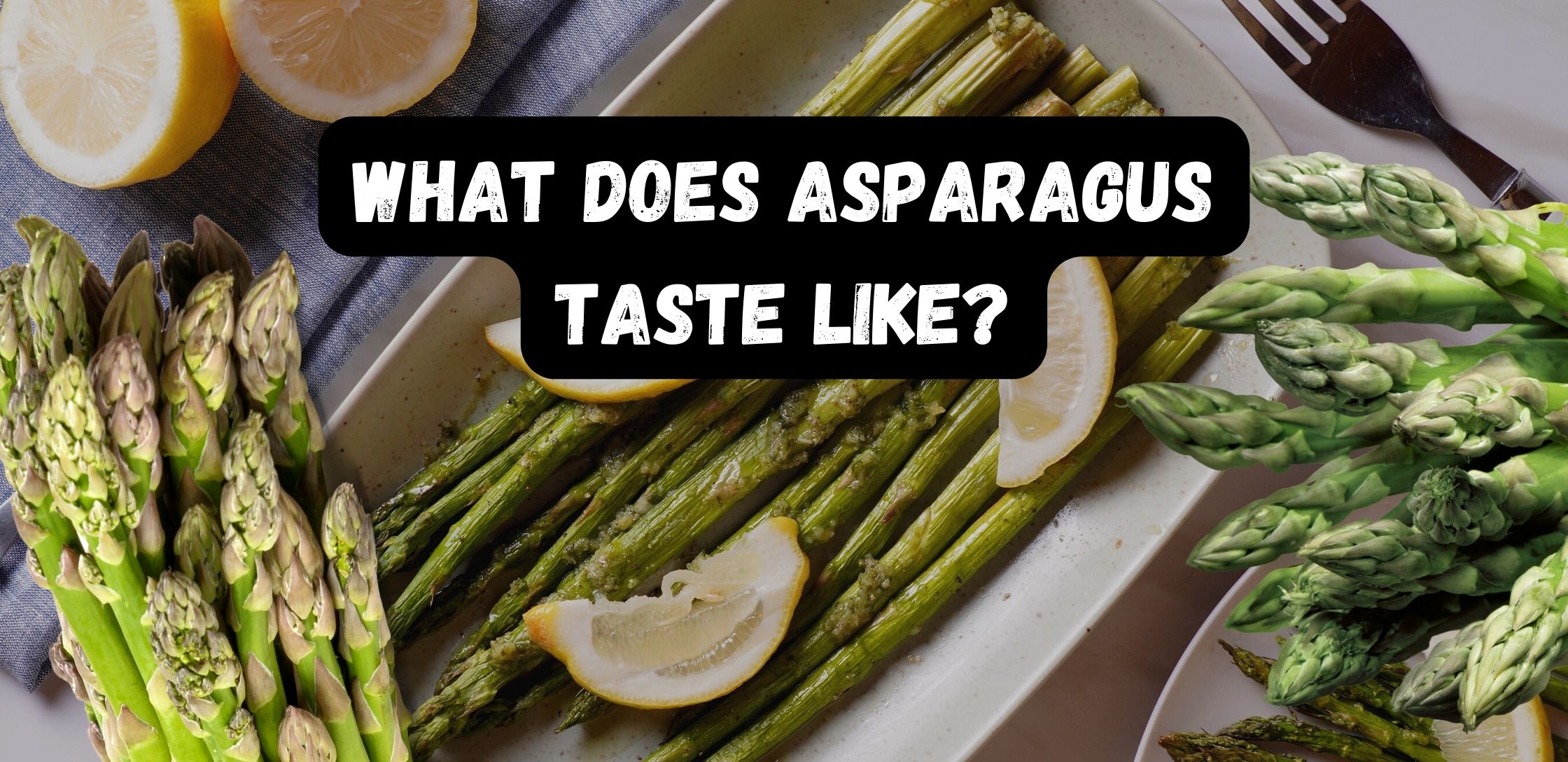What Does Asparagus Taste Like?
Important Note: When you buy through our links, we may earn a commission. As an Amazon Associate we earn from qualifying purchases. Content, pricing, offers and availability are subject to change at any time - more info.
Asparagus has a distinctive flavor that’s been compared to a combination of green beans, broccoli, and artichoke.
- When fresh: asparagus has a mild, grassy taste that is slightly astringent.
- When cooked: the taste can be more pronounced, though it tends to soak up the flavors of other ingredients.
Like most vegetables, people either love or hate it. But asparagus is a versatile vegetable with great health benefits. If you’re new to asparagus, knowing how to select and cook asparagus correctly can turn you into a fan – or if you’re a hater, you may change your mind.
About Asparagus
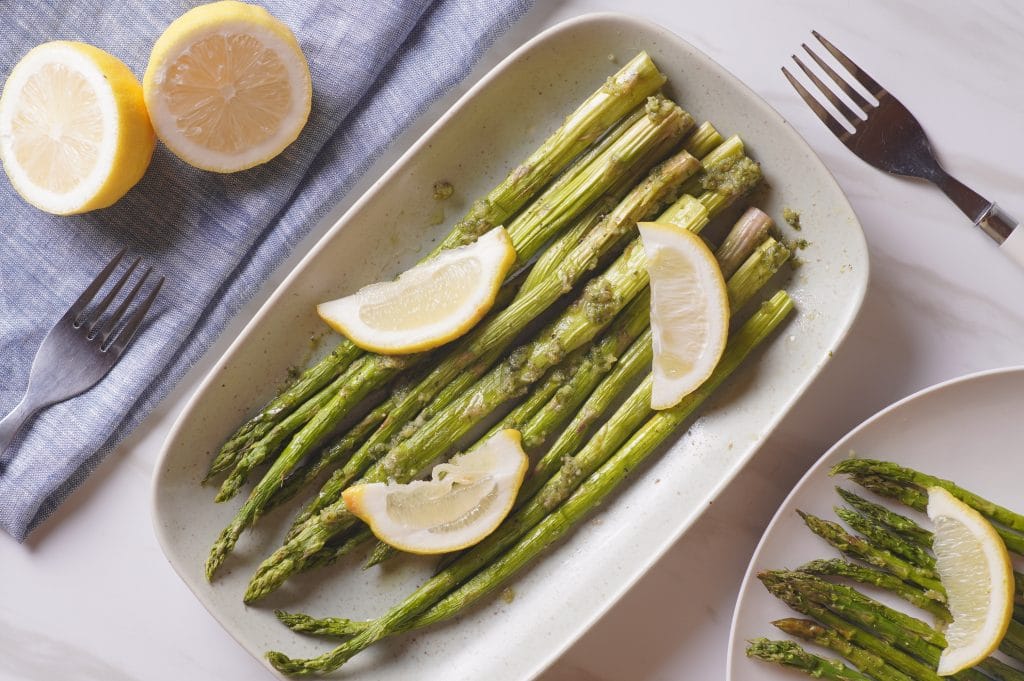
Asparagus has been enjoyed in dishes for over 2500 years by the Greeks and Romans. A perennial vegetable, asparagus ripens in the Spring. The edible portions are the thin stem and tightly packed leaf tip that appear above the ground. It’s picked young for better taste. Older asparagus tends to become more bitter and the stems, tougher.
Asparagus Colors
Asparagus comes in various colors, though green is the most common. White asparagus (grown underground/away from the sun) has a delicate, slightly bitter taste with a woodier stem. Purple, originating from Italy, is sweeter and nuttier tasting. All varieties can be eaten raw or cooked.
Asparagus Stems – Thick or Thin?
The thinness or thickness of asparagus has nothing to do with freshness. Young asparagus plants produce thinner stems, while older plants produce thicker ones. There’s no taste difference, but thicker stems tend to be woodier and may require peeling. Make your choice based on how you’re going to use the asparagus.
How to Select the Freshest Asparagus
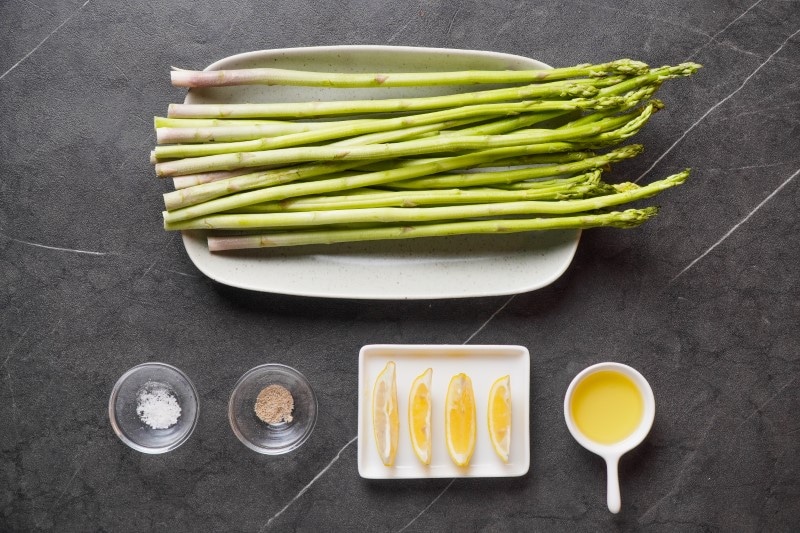
To find the freshest asparagus, look for a tightly packed tip and bright green stems. Any flowering in the tip indicates the asparagus was picked later. And skip asparagus with mushy tips, and brown, spotted or shriveled stems.
How To Keep Asparagus Crisp
Asparagus should be kept chilled. Wrap loosely in a damp cloth or plastic bag (tips in first/don’t seal the bag). Properly stored, asparagus should last 3-4 days.
If you have the room, fill a glass container with an inch of water and bundle the fresh asparagus spears upright in the glass, submerging the lower part of the stem. Cover the top of the asparagus with a plastic bag and place the glass container in the fridge. You can also use this method to perk up asparagus that may have wilted.
How To Trim Asparagus Spears

Trimming asparagus involves removing the woody, lower portion of the stem. To find it, slightly bend the stem looking for the spot where the woodier end meets the more tender portion. Snap or cut at this point. You can save the lower part to use in soups, stocks, casseroles or other baked dishes.
You can also peel thicker asparagus stems. It’s a necessity for white asparagus, but peeling the thicker stalks of purple or green asparagus is a matter of preference, but it can result in more even cooking since the tips tend to cook faster.
What About Canned Asparagus?
Canned asparagus is usually stored in brine, making it saltier – and mushier – than fresh asparagus. You can rinse the brine or soak the canned stems to remove some of the saltiness or reduce the salt in your recipes to adjust.
The best use for canned asparagus is in soups, quiches or casseroles where a crisp texture isn’t necessary or if you don’t want to peel and pre-cook fresh asparagus. But don’t be afraid to come up with other uses. I’ve seen canned asparagus as a pizza topping – and it wasn’t bad at all!
Eating Raw Asparagus
If you’re eating asparagus raw, look for the freshest thin-stalked variety you can find. Slice fresh asparagus thinly to allow it to absorb more flavors, and use olive oil, lemon juice, salt, and pepper to add seasoning. This will give you a fresh, grassy, green taste that is delicious and not overwhelming. Eat as is or add to salads or other cold dishes.
Cooking Asparagus
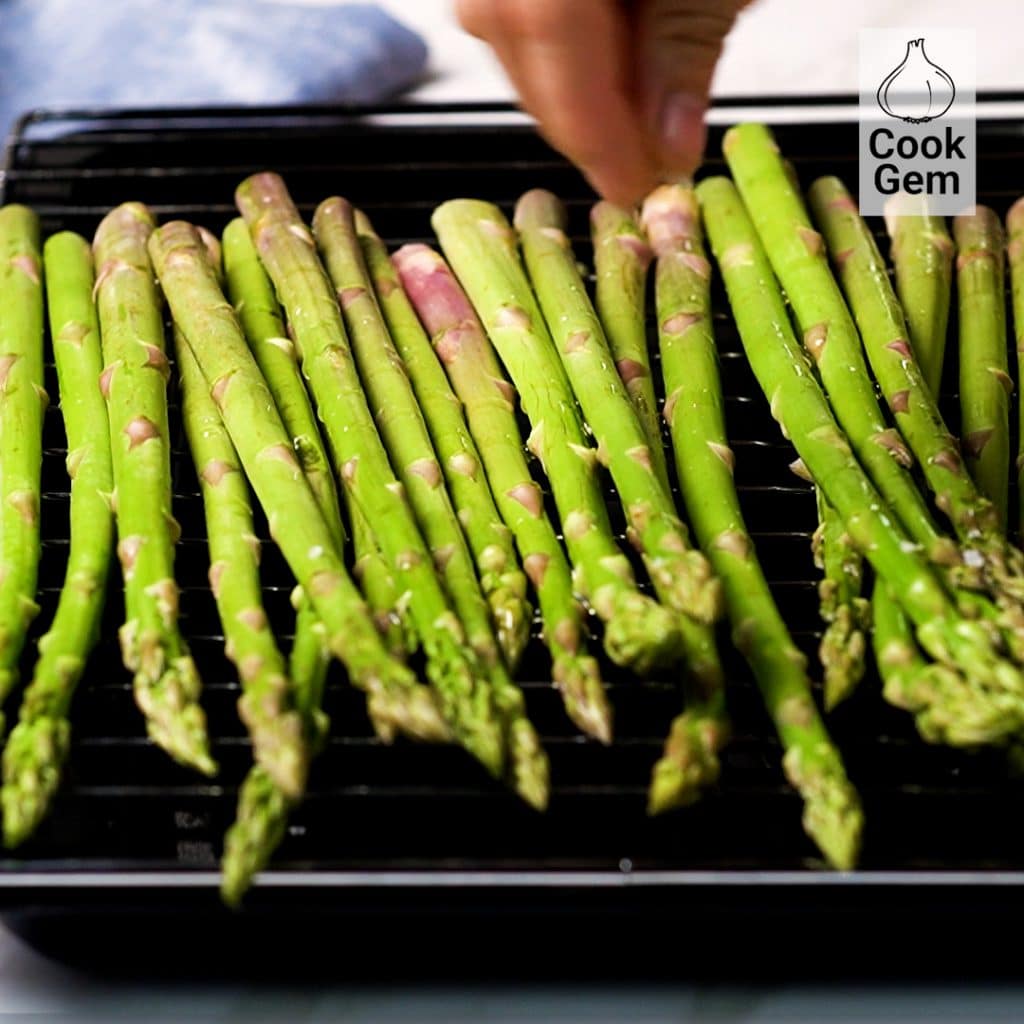
When cooking asparagus, the buds will cook faster than the stems. Once trimmed, bundle the asparagus and place the stalk side down in boiling water. Cover the tips with a foil tent. This will help keep the asparagus stems tender without overcooking the ends. Boil as long as needed – a quick blanch or crisp/tender…. or until the stems collapse if that’s the way you like it.
You can also steam asparagus in a covered steamer basket. Cooking time will be rapid and should not take longer than 2-4 minutes. One way to tell if your asparagus is cooked is if fresh green asparagus turns a bright green color.
Roasting is another option. Coat the asparagus with olive oil, salt, and pepper and roast in a 400-degree oven for around ten minutes, turning the asparagus at the mid-way mark. The tips should be lightly browned.
Asparagus can also be stir-fried or sauteed. As with other cooking methods, your cook time will be relatively short – under five minutes – and you want your stems to be green and tender and the tips only lightly browned.
Ways to Serve Asparagus
The delicate flavor of asparagus is often best complemented by olive oil, Hollandaise sauce, and strong cheeses such as cheddar or Parmesan. It’s also great with butter.
Canned asparagus can be cooked in the liquid to form a vegetable gravy served over mashed potatoes.
If you find you enjoy the taste of asparagus, there are many different ways to serve it or incorporate it into your meal. Here’s one easy and unusual way to serve asparagus as a starter.
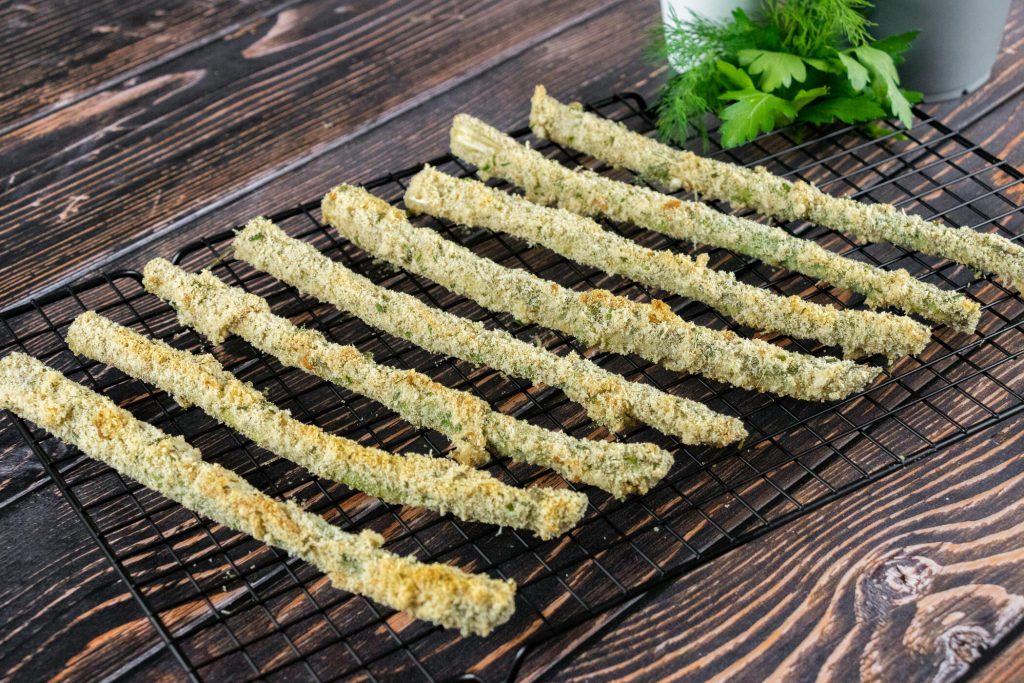
Health Benefits of Asparagus
Asparagus is an excellent vitamin K and B9 (folate) source. It also provides a variety of nutrients such as beta-carotene, vitamin C, and vitamin E, as well as the minerals zinc, selenium, and manganese.
Half a cup of asparagus (about 3 oz) will provide 57% of the recommended dietary allowance (RDI) Vitamin K and 34% RDI folate. Vitamin K is an essential nutrient that supports bone health and blood clotting. At the same time, folate works to help body processes such as cell growth and the formation of DNA. This process makes folate a vital nutrient during pregnancy.
At only 20 calories for a half cup, asparagus is a nutritious and healthy food and an excellent source of antioxidants.
A Side Effect of Asparagus
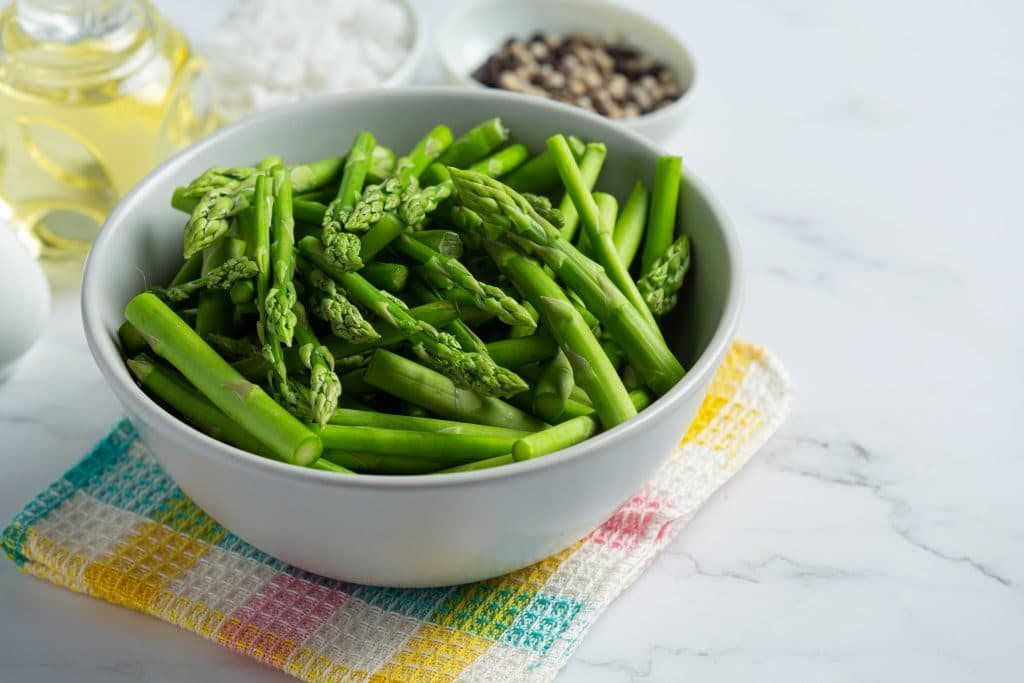
After consuming asparagus, some people’s urine takes on a slightly unpleasant scent that can last for several hours. What’s causing the odor? Asparagus contains a sulfur compound called asparagusic acid that can cause the odor.
But studies have shown that 58% of men and 62% of women do not detect this smell. Hopefully, this won’t keep you from eating this tasty and healthy vegetable. Much like garlic, the taste outweighs the smelly downside.
Alternatives to Asparagus
If you don’t like the taste of asparagus, you may want some alternative vegetables to include in your recipes. If you’re looking for a similar nutrient profile with a different flavor, you can replace asparagus as a side dish with the following vegetables:
- Broccoli is an excellent asparagus substitute, especially tender stem broccoli (broccolini). Readily available and generally less expensive, broccoli is the closest match for essential nutrients.
- Green beans are another vegetable to substitute for a green side dish.
- Leeks do not taste remotely like asparagus, but their nutrient profile is similar, and you may find they make a good substitute in dishes like stir-fries or soups.
- Celery may work as a fresh substitute in green spring salads. Although the flavor profile differs from asparagus, it may provide texture to salads with a salty, savory taste.
- Artichokes, nopalitos (prickly pear cactus stem), and fiddlehead ferns are more unusual substitutes for asparagus.
